
Composites and Advanced Materials
Scope & Guideline
Innovating Today for a Sustainable Tomorrow
Introduction
Aims and Scopes
- Composite Material Design and Fabrication:
Research on the methodologies and techniques for designing and fabricating various types of composite materials, including natural fiber-reinforced, polymer matrix, and metal matrix composites. - Mechanical and Structural Analysis:
Investigation of the mechanical properties, structural integrity, and performance of composite materials under various loading conditions, including fatigue, impact, and thermal effects. - Advanced Characterization Techniques:
Utilization of innovative experimental and numerical techniques for the characterization of composites, including microstructural analysis and failure mechanisms. - Sustainability and Eco-friendly Alternatives:
Studies focusing on sustainable materials and processes, including recycling and the use of bio-based composites in construction and manufacturing. - Multiscale Modeling and Simulation:
Development and application of multiscale modeling approaches to predict the behavior of composite materials from the microscale to the macroscale.
Trending and Emerging
- Additive Manufacturing and 3D Printing:
An increasing number of studies are exploring the applications of additive manufacturing techniques for fabricating composite materials, highlighting innovations in processing methods and material properties. - Smart and Functional Composites:
Research on smart materials that respond to environmental stimuli or have multifunctional properties is on the rise, indicating a growing interest in developing advanced composites for specialized applications. - Nanocomposites and Hybrid Materials:
There is a significant trend towards the investigation of nanocomposites and hybrid materials, which combine different types of reinforcements and matrices to enhance performance characteristics. - Sustainability and Recycling in Composites:
Recent publications emphasize sustainable practices and the recycling of composite materials, reflecting a broader awareness and commitment to environmental impact in materials science. - Numerical and Computational Modeling:
A growing emphasis on advanced numerical modeling techniques, such as finite element analysis and machine learning approaches, is evident, facilitating better predictions and understanding of composite behavior.
Declining or Waning
- Traditional Composite Manufacturing Techniques:
There appears to be a decline in papers focusing solely on conventional composite manufacturing methods, as the field increasingly shifts toward advanced and additive manufacturing techniques. - Basic Characterization Studies:
Research that primarily focuses on basic characterization without application context is becoming less prominent, as the journal seeks studies that integrate characterization with practical applications and innovations. - Natural Fiber Composites:
Although still relevant, there seems to be a decrease in the number of studies dedicated solely to natural fiber composites, as the focus shifts toward more advanced materials and hybrid composites.
Similar Journals
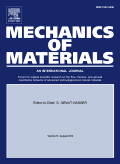
MECHANICS OF MATERIALS
Shaping the Future of Mechanics with Cutting-Edge StudiesMECHANICS OF MATERIALS, published by ELSEVIER, is a premier international journal serving the dynamic fields of Materials Science and Mechanics. With an esteemed reputation reflected in its 2023 Quartile rankings—Q1 in Instrumentation, Q1 in Materials Science (miscellaneous), and Q1 in Mechanics of Materials—this journal offers a vital platform for the dissemination of cutting-edge research from 1982 to the present. Operating from its headquarters in Amsterdam, Netherlands, the journal boasts impressive Scopus ranks, including 22nd in Physics and Astronomy (Instrumentation) and 67th in Engineering (Mechanics of Materials), placing it firmly within the top echelons of academic publishing. Though not an open-access journal, its rigorous peer-reviewed content ensures high-quality contributions aimed at advancing knowledge and application in mechanics and materials. Researchers, professionals, and students are encouraged to engage with the latest studies and findings that underpin innovations in material properties, testing methodologies, and engineering applications, reinforcing the journal’s critical role in shaping the future of the discipline.
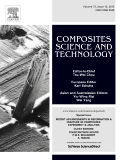
COMPOSITES SCIENCE AND TECHNOLOGY
Elevating Standards in Composite Research and DevelopmentComposites Science and Technology, a premier journal published by Elsevier Sci Ltd, serves as a vital resource in the fields of composite materials and engineering. With an impressive 2023 impact factor reflecting its influential contributions, this journal has established itself within the top tier of academic publishing, flaunting a Q1 ranking in both the Ceramics and Composites and Engineering (Miscellaneous) categories. Covering a diverse range of topics from the development of novel composite materials to their practical applications across various industries, it is recognized for its rigorous peer-review process and high-quality research outputs. As reflected in its Scopus rankings, Composites Science and Technology places in the 97th percentile among general engineering journals and the 94th percentile amongst ceramics and composites science literature. Researchers and professionals alike benefit from its comprehensive access to cutting-edge discoveries and advancements, making it an indispensable tool for driving innovation within this dynamic field.
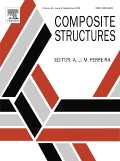
COMPOSITE STRUCTURES
Advancing the Frontiers of Composite ResearchComposite Structures, published by Elsevier Science Ltd, is a premier academic journal that has been at the forefront of research in the fields of Ceramics and Composites and Civil and Structural Engineering since its inception in 1983. With a remarkable Q1 ranking in both categories for 2023, it is recognized as one of the leading publications, occupying the 22nd position in Civil and Structural Engineering and the 14th in Materials Science, showcasing its high-impact contributions to the respective fields. The journal serves as a crucial platform for disseminating cutting-edge research, innovative methodologies, and comprehensive reviews that cater to the academic and professional community. Although it does not offer open access options, its robust impact factor and extensive reach through Scopus ensure that the articles published are widely cited and serve as valuable resources for enhancing the understanding of composite materials and structures. The journal invites contributions that push the boundaries of knowledge, making it an essential read for researchers, engineers, and students invested in advanced materials and structural applications.
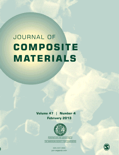
JOURNAL OF COMPOSITE MATERIALS
Exploring the Science of Materials for TomorrowJOURNAL OF COMPOSITE MATERIALS, published by SAGE PUBLICATIONS LTD, is a premier academic journal dedicated to advancing the field of composite materials. With a long-standing history since 1967, this journal serves as a vital platform for researchers and professionals in the areas of ceramics and composites, materials chemistry, mechanical engineering, and mechanics of materials. The journal's impact is further underscored by its Q2 quartile ranking in various categories as of 2023, alongside notable Scopus rankings in multiple engineering and material science disciplines. Though it currently lacks Open Access options, its rigorous peer-review process ensures the high quality and relevance of its published research. This journal is instrumental in fostering innovation and promoting collaboration among academics and industry professionals, making it essential reading for anyone involved in materials science and engineering.

JOURNAL OF WUHAN UNIVERSITY OF TECHNOLOGY-MATERIALS SCIENCE EDITION
Exploring the Future of Material CompositionJOURNAL OF WUHAN UNIVERSITY OF TECHNOLOGY-MATERIALS SCIENCE EDITION, published by Wuhan University of Technology, stands as a prominent platform for the dissemination of innovative research in the field of Materials Science. With an ISSN of 1000-2413 and an E-ISSN of 1993-0437, this journal is committed to advancing the understanding of material composition, properties, and applications, contributing to the broader scientific community. Since its inception in 1994, the journal has maintained a steady trajectory of growth, culminating in a Q3 category ranking in Materials Science (miscellaneous) for the year 2023, positioning it within the 33rd percentile of its peers in Scopus rankings. By embracing rigorous peer-review standards and encouraging collaborative scholarship, the journal aims to inspire researchers, professionals, and students alike to explore cutting-edge advancements within the field. Although it does not currently operate under an open access model, its wealth of knowledge remains invaluable for those seeking to deepen their understanding of materials science and its transformative impact across various industries.
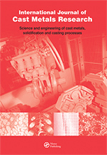
INTERNATIONAL JOURNAL OF CAST METALS RESEARCH
Exploring Innovations in Mechanical Engineering and Materials ScienceInternational Journal of Cast Metals Research, published by Taylor & Francis Ltd, serves as a premier platform for the dissemination of cutting-edge research in the fields of Mechanical Engineering, Mechanics of Materials, and Metals and Alloys. With a commitment to advancing the understanding of cast metals, this peer-reviewed journal has achieved notable recognition, featuring a 2023 Q2 ranking in its respective categories and ranking 71st in the Materials Science field according to Scopus. Researchers and professionals will find a wealth of valuable insights through rigorous studies and innovative findings, reflecting the journal's goal of facilitating knowledge transfer and addressing contemporary challenges in material science. Furthermore, its accessible publication years from 1996 to 2024 ensure that it not only captures the evolution of technology in cast metals but also stands at the forefront of future developments. Ideal for academics and practitioners alike, the journal aims to foster collaboration and inspire new developments within the discipline.

Journal of Polymer & Composites
Connecting Researchers to Shape the Future of Composite Materials.Journal of Polymer & Composites, with ISSN 2321-8525 and E-ISSN 2321-2810, is an esteemed academic journal published by STM JOURNALS, dedicated to the advancement of knowledge in the rapidly evolving fields of polymer science and composite materials. The journal serves as a pivotal platform for researchers and professionals, offering cutting-edge research articles, reviews, and case studies that explore innovative developments and applications in polymer chemistry, material science, and engineering. Although currently lacking an impact factor citation, the journal aims to foster dialogue among academia and industry partners, addressing the latest trends and breakthroughs that drive the field forward. With a commitment to scholarly excellence, the Journal of Polymer & Composites is positioned as an essential resource for enhancing the understanding of polymer composites and their multifaceted applications. Notably, STM JOURNALS' reputation for quality publications underscores the journal’s importance in facilitating impactful research and educational initiatives worldwide.

Frontiers in Materials
Advancing the Future of Materials Science.Frontiers in Materials, an esteemed journal published by FRONTIERS MEDIA SA, is a leading platform in the field of Materials Science, with a notable impact factor placing it in the Q2 category of its discipline as of 2023. Since its establishment as an Open Access journal in 2014, it has fostered considerable academic exchange, allowing researchers from around the globe to share their innovative findings and insights. Based in Lausanne, Switzerland, this journal not only emphasizes high-quality peer-reviewed articles but also prioritizes rapid dissemination of research, as evidenced by its commendable Scopus ranking of #62 out of 196 in Materials Science (miscellaneous). By consistently striving to bridge the gap between academia and practical applications, Frontiers in Materials serves as an invaluable resource for researchers, professionals, and students seeking to delve into cutting-edge advancements and transformative applications in materials science.
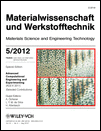
MATERIALWISSENSCHAFT UND WERKSTOFFTECHNIK
Innovating Tomorrow's Materials Today.MATERIALWISSENSCHAFT UND WERKSTOFFTECHNIK, published by WILEY-V C H VERLAG GMBH, is a prominent journal dedicated to the field of materials science and engineering. With its ISSN 0933-5137 and E-ISSN 1521-4052, this journal serves as a vital resource for researchers and professionals engaged in exploring the intricate relationships between the properties of materials and their applications. Established in 1970 and continuing through 2024, the journal has been consistently recognized in various categories, achieving a Q3 ranking in 2023 across Condensed Matter Physics, Materials Science (miscellaneous), Mechanical Engineering, and Mechanics of Materials. Although it does not offer open access, its high-quality peer-reviewed content is fundamental to the advancement of knowledge within its three key areas: novel material development, material characterization, and application of materials in engineering contexts. As a driving force in the scientific community, MATERIALWISSENSCHAFT UND WERKSTOFFTECHNIK continues to cater to the curiosity of aspiring students, seasoned professionals, and researchers alike, facilitating a deeper understanding of the complexities of material technology.
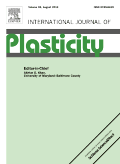
INTERNATIONAL JOURNAL OF PLASTICITY
Advancing the Frontiers of Plasticity ResearchINTERNATIONAL JOURNAL OF PLASTICITY, published by Pergamon-Elsevier Science Ltd, stands as a pivotal forum in the field of materials science and engineering, exploring the nuances of plastic behavior in materials. With its ISSN 0749-6419 and E-ISSN 1879-2154, this esteemed journal has been a cornerstone of academic research since its inception in 1985, continuing to hold significant relevance as it converges towards 2024. Ranking in the Q1 quartile across multiple categories, including Materials Science (Miscellaneous), Mechanical Engineering, and Mechanics of Materials, it is recognized for its high impact, evidenced by its competitive Scopus rankings that place it in the 97th percentile among mechanical engineering journals. Although it does not offer open access, the journal remains committed to disseminating cutting-edge research findings that advance understanding in plasticity, providing researchers, professionals, and students with vital insights into contemporary issues and innovations in the field.